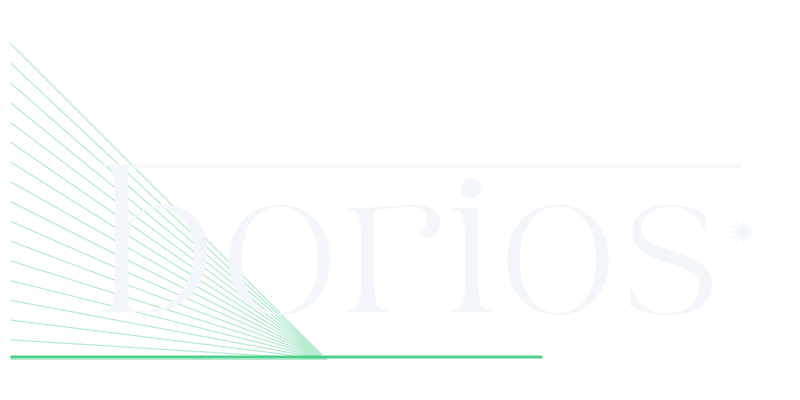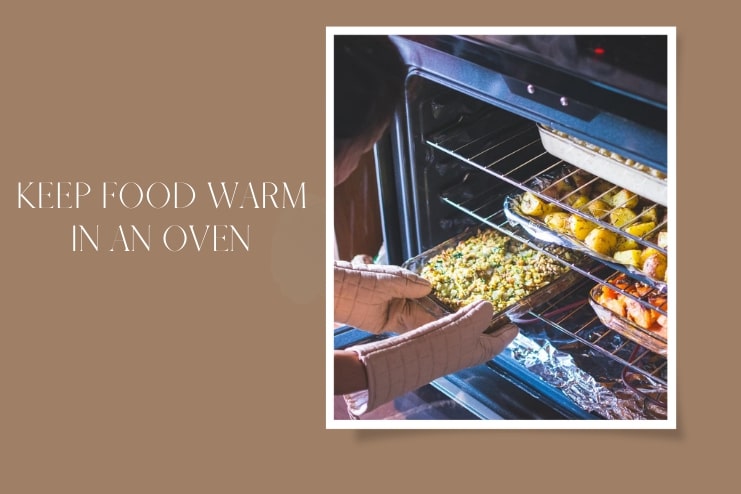When it comes to dining, the temperature of your food is just as important as its taste. Enjoying a dish at the right temperature elevates the entire culinary experience, unveiling the rich, full flavors that a chef or home cook intended. Unfortunately, maintaining this optimal temperature can sometimes prove a challenge. As food waits to be served, it can cool down and lose its appealing freshness.
The bigger hurdle, however, lies not just in keeping your meals at the right warmth, but in doing so without letting them slip into being overcooked. Overcooking can turn a perfectly prepared dish into a less palatable experience, altering texture, drying out meats, or even developing undesirable flavors. Balancing the act of keeping food warm while avoiding overcooking is a skill in itself – and that’s what we are going to unravel in this article.
Understanding Dish Temperatures
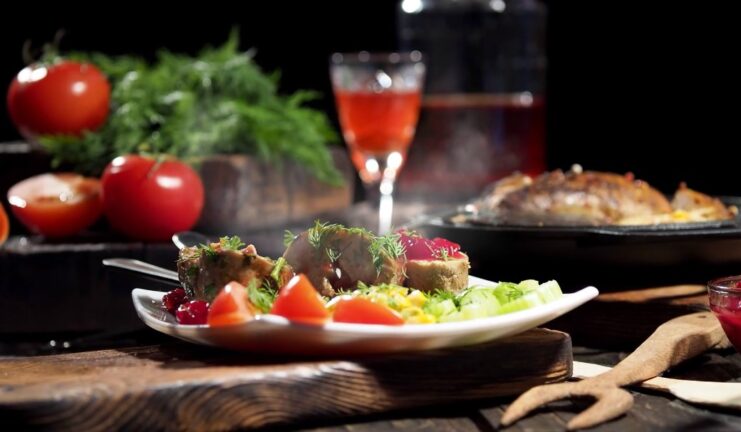
The serving temperature of food often depends on its type. A well-done steak is best served hot, just off the grill, while sushi is enjoyed at room temperature, and a salad or sorbet is best served cold. While you may want to keep a pot of soup simmering until it’s served, a rare roast beef might be at its best when allowed to rest and cool a bit before slicing. Hence, the first step to keeping food warm without overcooking it is understanding the ideal serving temperature for each dish.
On the other hand, ‘carryover cooking’ is a term every cooking enthusiast must familiarize themselves with. This concept refers to the fact that food, particularly meat, continues to cook after being removed from the heat source due to residual heat. Depending on the size and density of the food, the internal temperature can rise significantly during this rest period. Acknowledging this can help prevent overcooking when you’re trying to keep your dish warm.
Preparing Your Oven
Preparing your oven involves more than just turning a knob. The temperature setting on your oven might not always be accurate. Therefore, preheating the oven to the right temperature is crucial. Generally, a low setting of around 200 Fahrenheit (95 Celsius) is ideal for keeping food warm without cooking it further.
Knowing your oven well will enable you to manage its heat output effectively. An oven thermometer can be your best friend here. This handy tool provides an accurate reading of the oven’s internal temperature, helping you maintain the precise level of heat needed to keep your dish warm without overcooking.
The Right Cookware
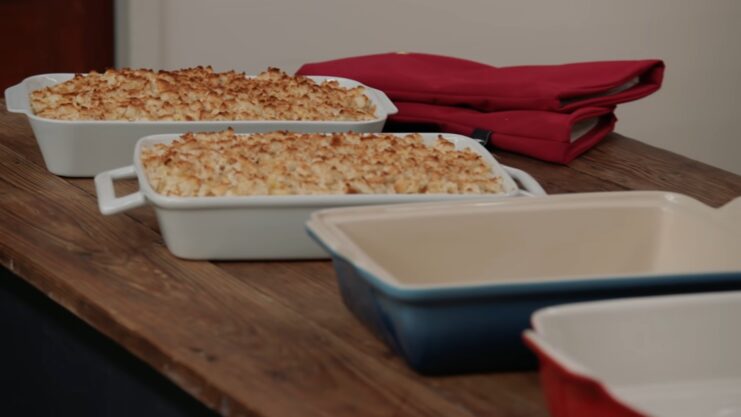
Your choice of cookware plays a significant role in maintaining food temperature. Certain materials, like cast iron, are excellent at retaining heat, while others, such as stainless steel, might not hold heat as well. Hence, choosing cookware that retains heat effectively can help you keep your dish warm.
For those looking to invest in special kitchen tools, insulated or thermal cookware can be a game-changer. These items are designed to keep food warm over extended periods without the risk of overcooking. From thermal serving dishes to insulated food carriers, these tools can provide extra assurance that your meal stays at the desired temperature.
Wrapping and Insulating Techniques
Wrapping and insulating your food are cost-effective, straightforward methods to keep your meals warm. This approach can also help maintain the moisture of your dishes, preventing them from drying out. It’s important to note, though, that this technique works best when your dish has already been cooked to its optimal temperature.
Common kitchen items such as aluminium foil, clean towels, and heat-resistant covers can be utilized in this regard. Aluminium foil can help trap heat in your dishes, while towels can provide an additional layer of insulation. Heat-resistant covers, on the other hand, allow you to keep your dishes warm in the oven without the fear of them overcooking.
Utilizing the Warming Drawer
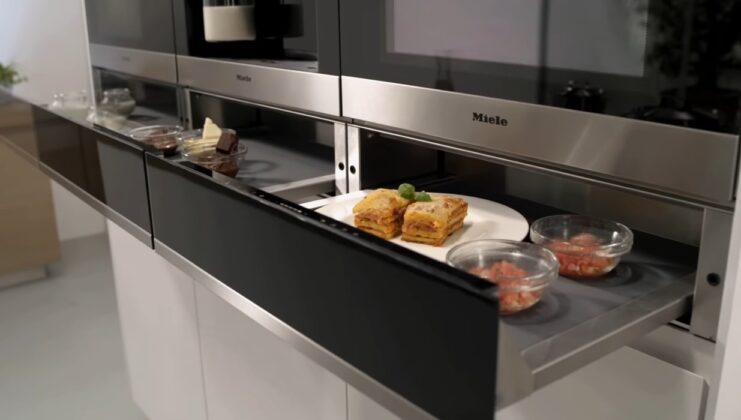
The warming drawer, a feature found in some modern ovens, is an often-underutilized tool that can be very effective in maintaining food temperature. It’s designed to keep cooked food at a consistent heat, making it an excellent solution for when meals are prepared in advance or when coordinating the completion of multiple dishes.
When using a warming drawer, it’s essential to know how to arrange your food properly. Ensure that there is sufficient space between items to allow for proper heat circulation. Be mindful of stacking different dishes on top of each other as this can lead to uneven heating or, worse, some items being overcooked.
Utilizing Oven-Safe Dishes and Covers
Oven-safe dishes and covers offer another practical solution for keeping food warm. They are designed to withstand high temperatures without cracking or shattering, providing a safe and efficient way to utilize the residual heat in your oven.
Materials such as ceramic, glass, metal, and certain types of plastic are commonly used in oven-safe dishes and covers. Each type offers unique benefits. For instance, ceramic and glass have excellent heat retention properties, making them great for keeping dishes warm, while metal is more durable and can withstand higher temperatures.
Alternatives to the Oven
Creating a Double Boiler Setup
A double boiler is a technique often used to gently heat delicate foods like chocolate or custard, but it can also be a useful tool for keeping food warm. The setup typically involves a pot of simmering water with another bowl or pot set on top, allowing the food to be heated gently by the steam.
Setting up a double boiler is quite straightforward. Start by filling a pot with a few inches of water, making sure that the water level is low enough that it won’t touch the bottom of the bowl or pot you’ll set on top. Bring the water to a simmer and then place your bowl or pot with the food to be kept warm on top. This method provides a gentle, consistent heat that can keep your dish warm without overcooking it.
Using a Slow Cooker or Crock-Pot
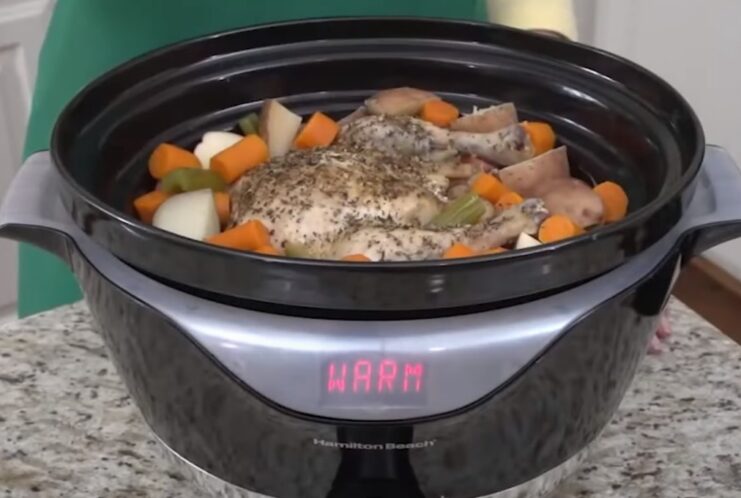
Slow cookers or crock-pots are not just for making stews or soups; they can also serve as excellent tools for keeping food warm. Most models have a ‘keep warm’ setting that maintains a low temperature, perfect for holding your food at serving temperature without additional cooking.
When using a slow cooker or crock-pot for this purpose, it’s crucial to monitor the temperature setting and duration. Avoid keeping food on the ‘keep warm’ setting for extended periods, as it can eventually lead to overcooking or food safety issues, especially with proteins like meat or poultry.
Employing Warm Towels or Hot Water Baths
Creative techniques such as warm towels or hot water baths can be especially handy for keeping plated food or smaller dishes warm. Wrapping a dish in a towel that has been warmed in the oven can provide a gentle heat that won’t continue cooking the food.
Alternatively, hot water baths, also known as ‘bain-marie’, involve setting your dish in a larger dish filled with hot water. The water’s temperature can be easily controlled and offers even heating, making it an excellent method for foods that need gentle warmth. This technique requires monitoring to ensure the water stays hot and does not cool down too much.
Timing Your Cooking and Resting Periods
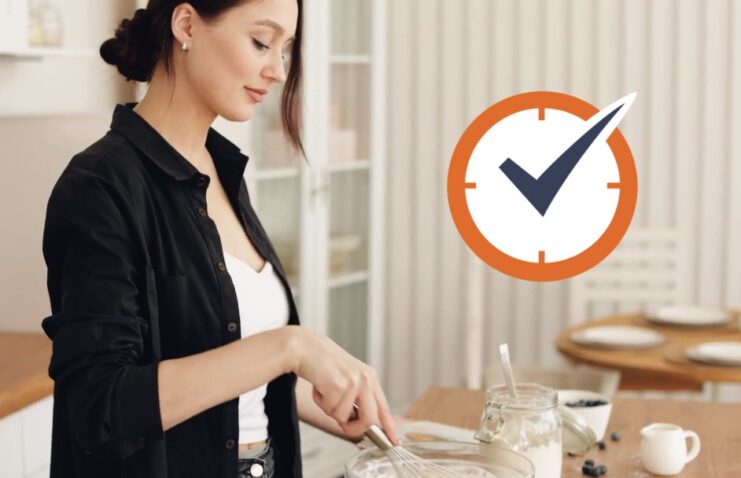
Perfect timing is critical when cooking. Not only do you need to consider the time spent on the heat source, but you should also account for resting periods. This approach becomes particularly essential when you’re trying to keep your food warm without overcooking.
Coordinating your cooking process effectively can go a long way in maintaining the ideal temperature of your dishes. For instance, resting meat after cooking allows for carryover cooking, which could keep your dish warm for a while. Meanwhile, for other dishes, you might need to time it such that they finish cooking just when you’re about to serve.
Garnishing and Reheating Tips
Garnishing food just before serving doesn’t just enhance presentation, but it can also provide an illusion of freshness that complements the dish’s maintained warmth. A sprinkle of fresh herbs or a dash of zesty lemon juice can revive the flavors of the dish, making it taste as though it’s just been cooked.
Reheating food is often necessary when meals are prepared ahead of time. However, it’s important to reheat properly to avoid overcooking. Reheating should be done at a low temperature and for a short period. Microwaving should be done in short bursts, while reheating in the oven should be done covered to prevent dryness.
Conclusion
Keeping food warm without overcooking it is an art, but with the right techniques, anyone can master it. From understanding your food temperatures, preparing your oven, choosing the right cookware, to timing your cooking and resting periods, every step is crucial.
By employing the tips and techniques discussed in this article, you can ensure that your meals are not only delicious but also served at the perfect temperature. We encourage you to give these methods a try and experience the difference it makes in your culinary journey. After all, a good dish is not just about taste, but also about the perfect serving temperature that unlocks all its flavors.
